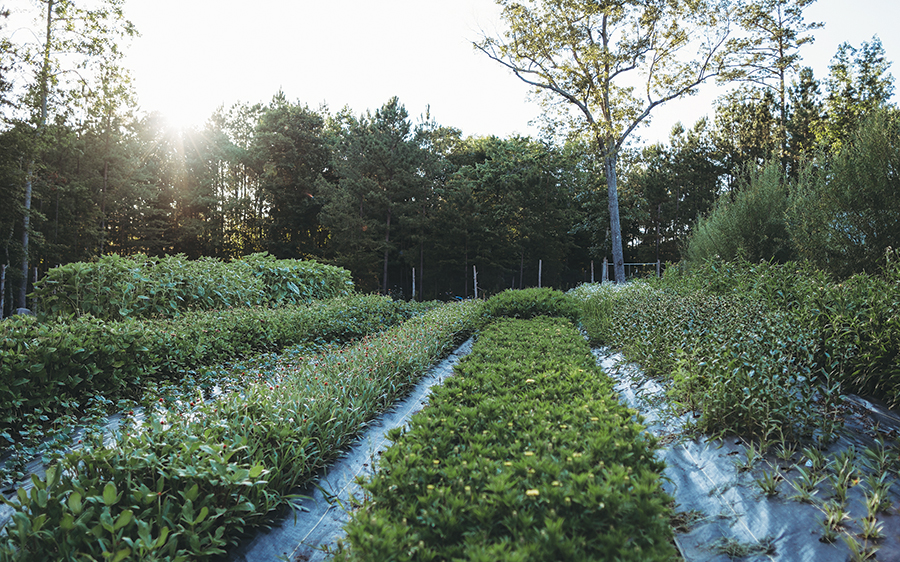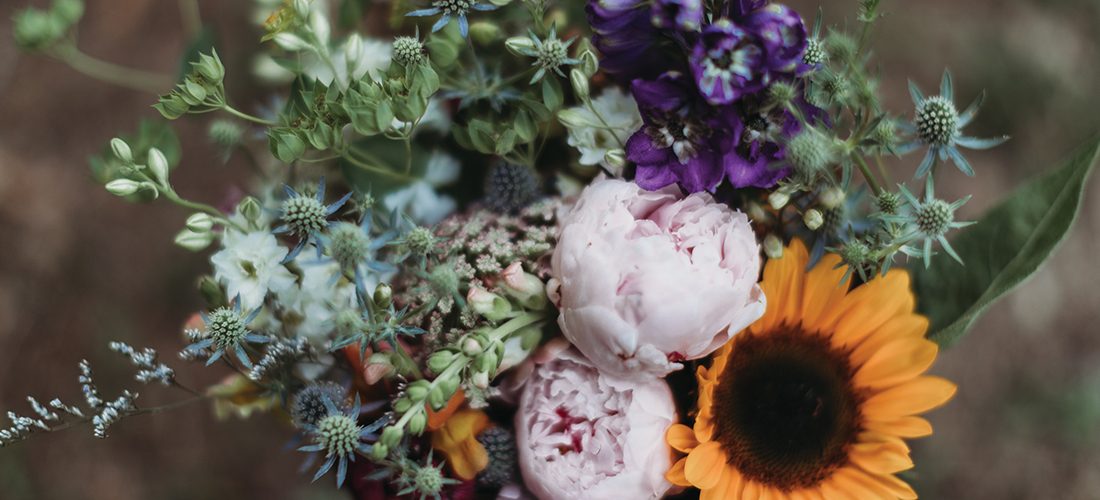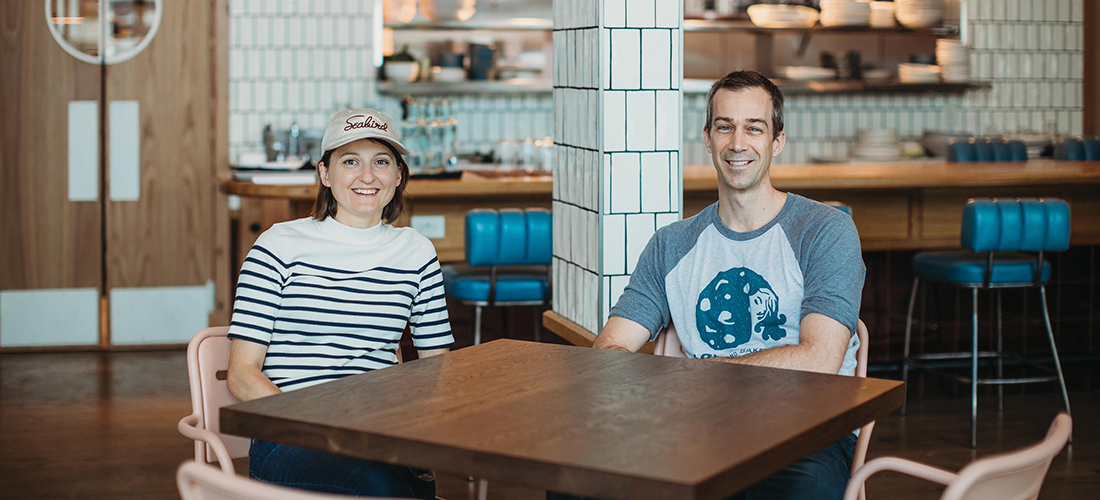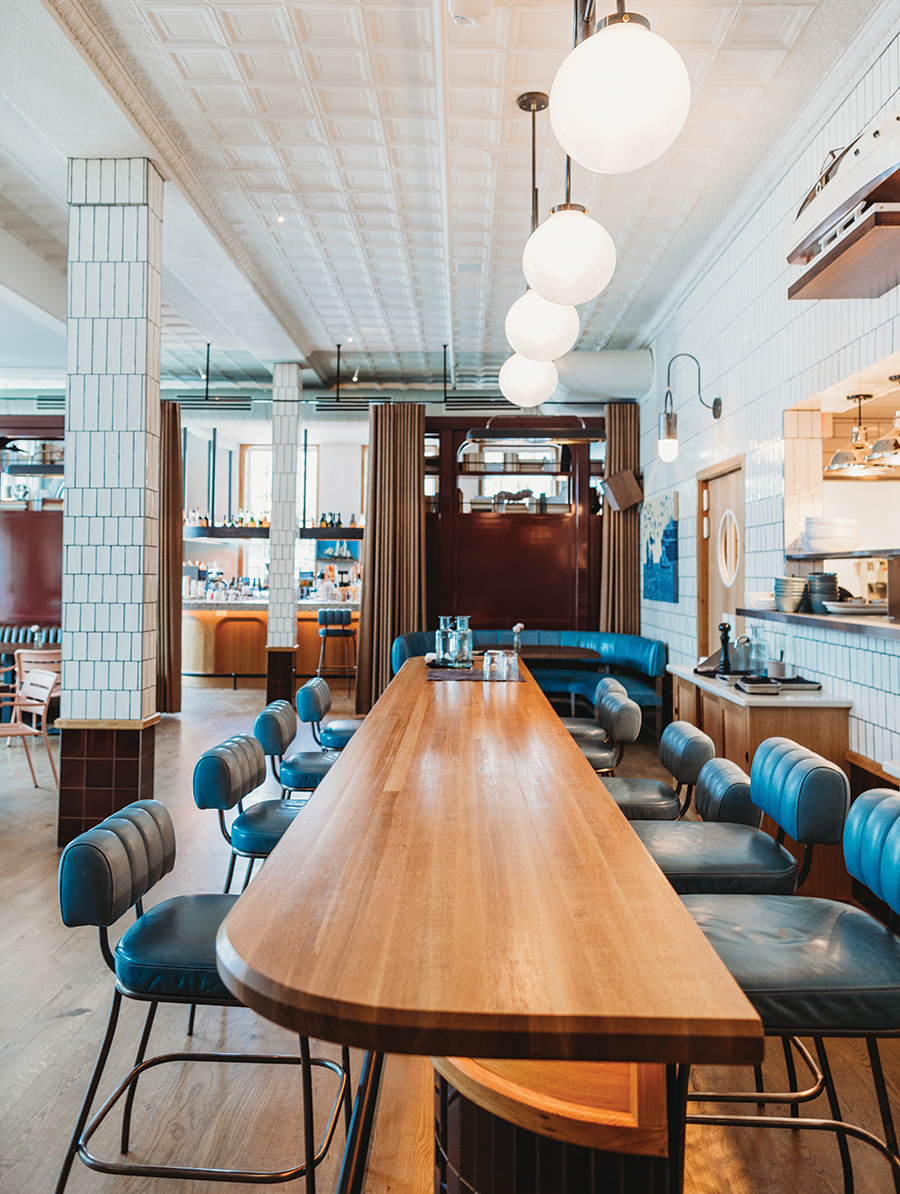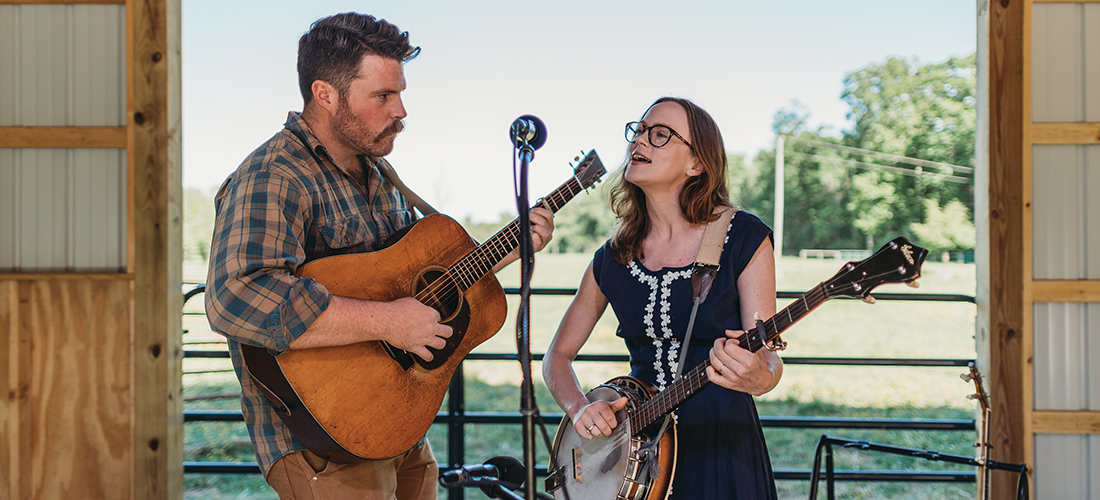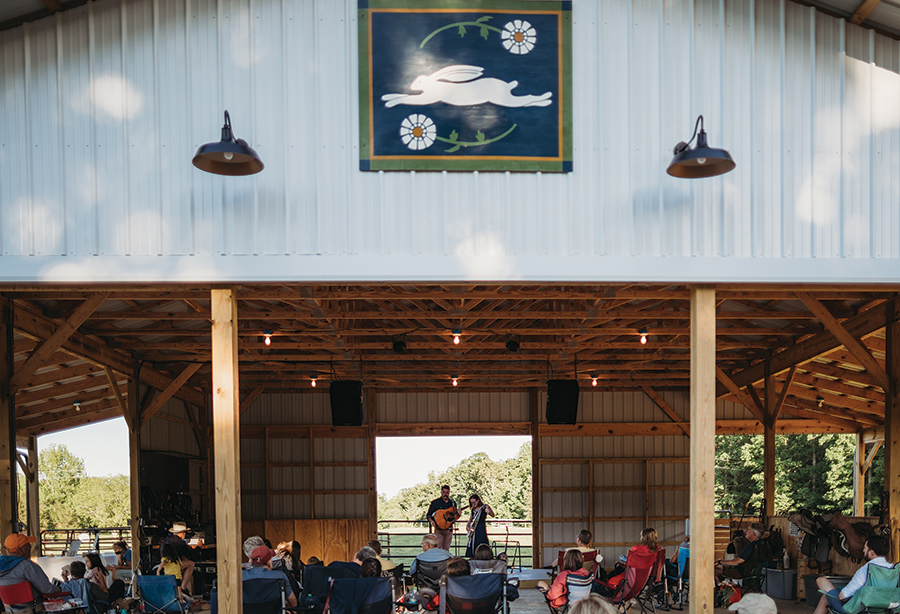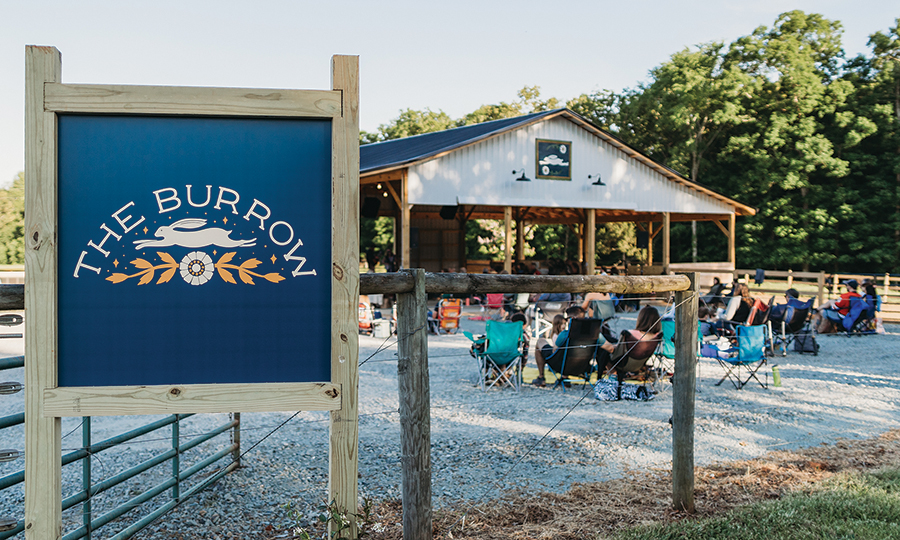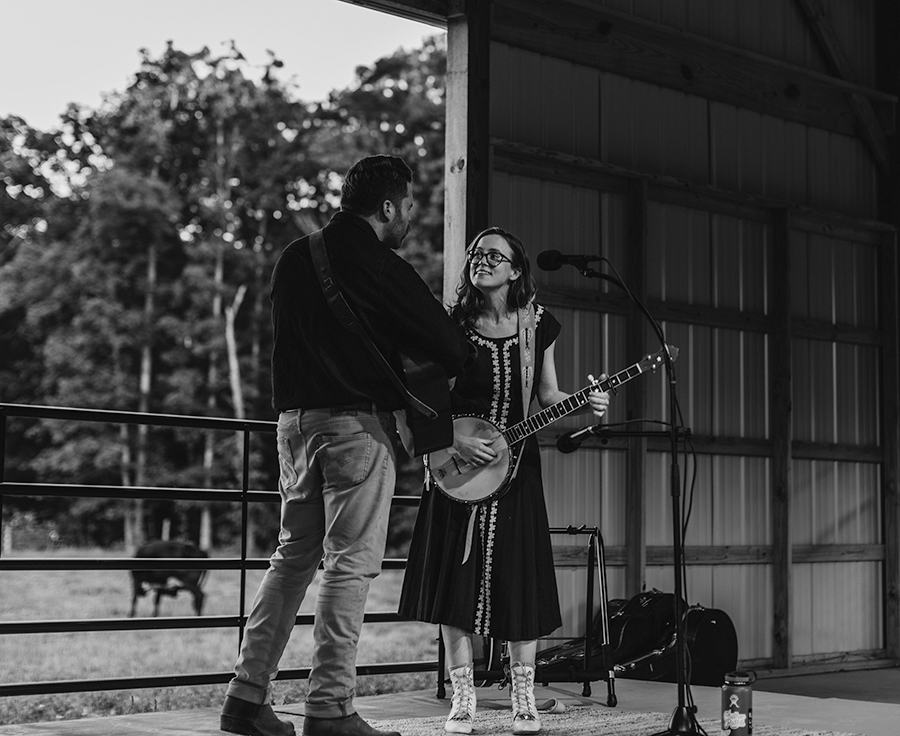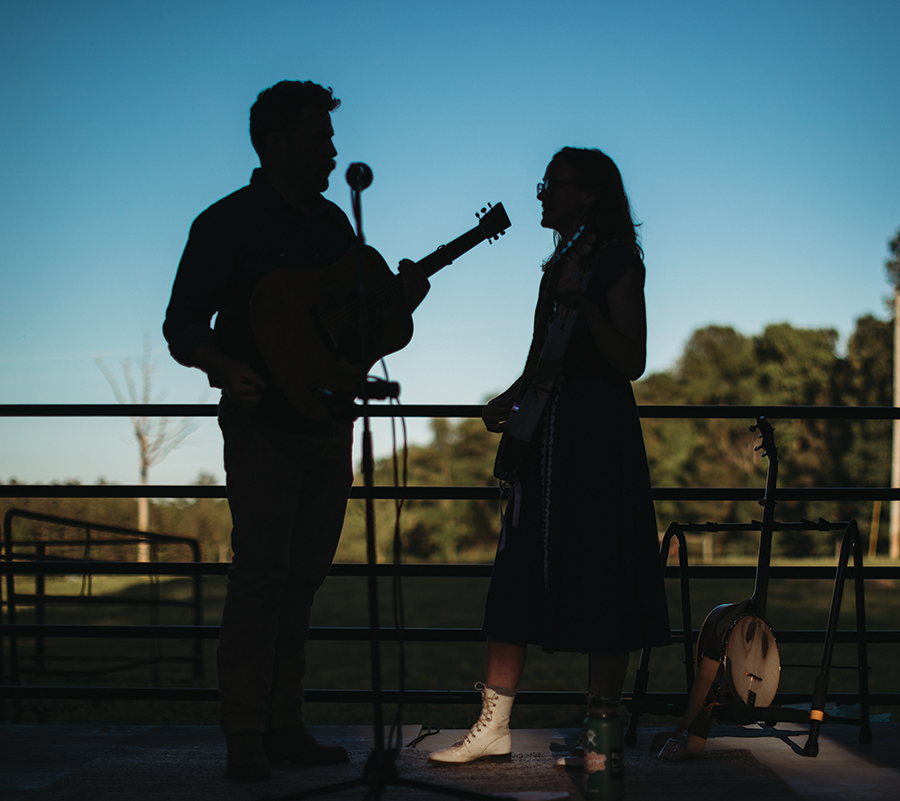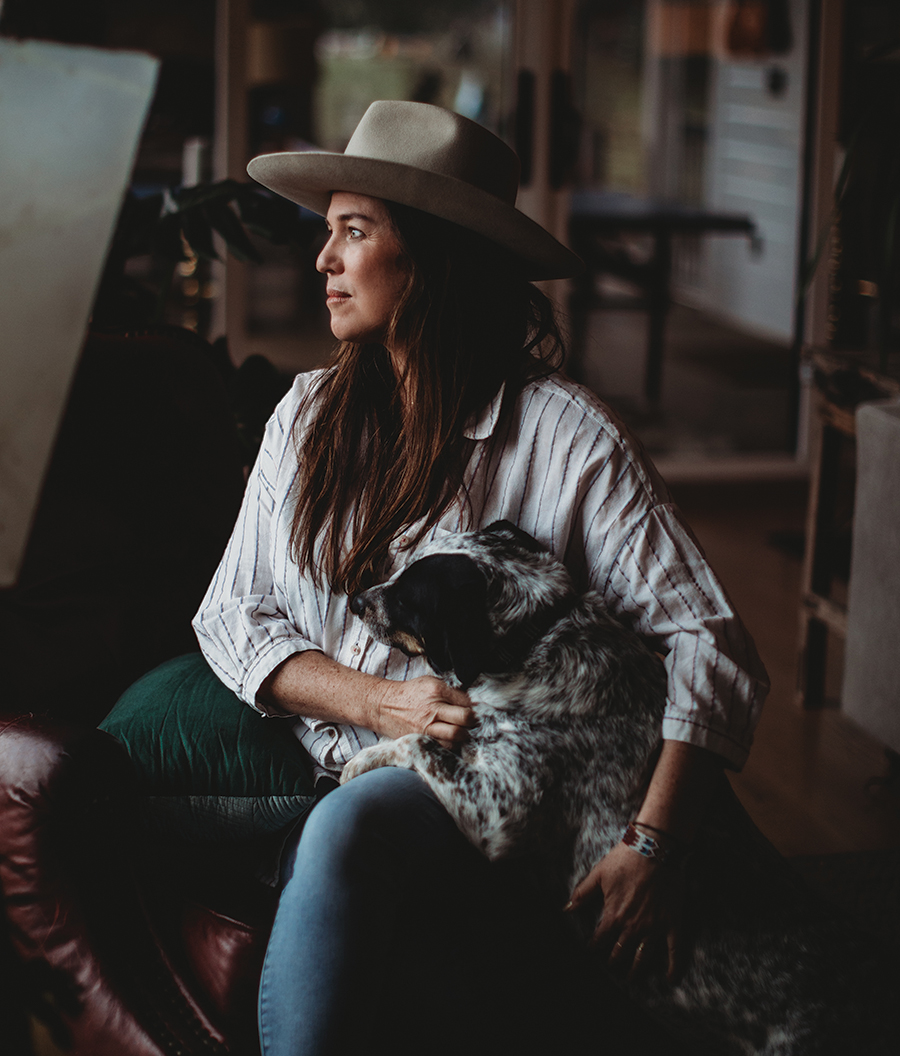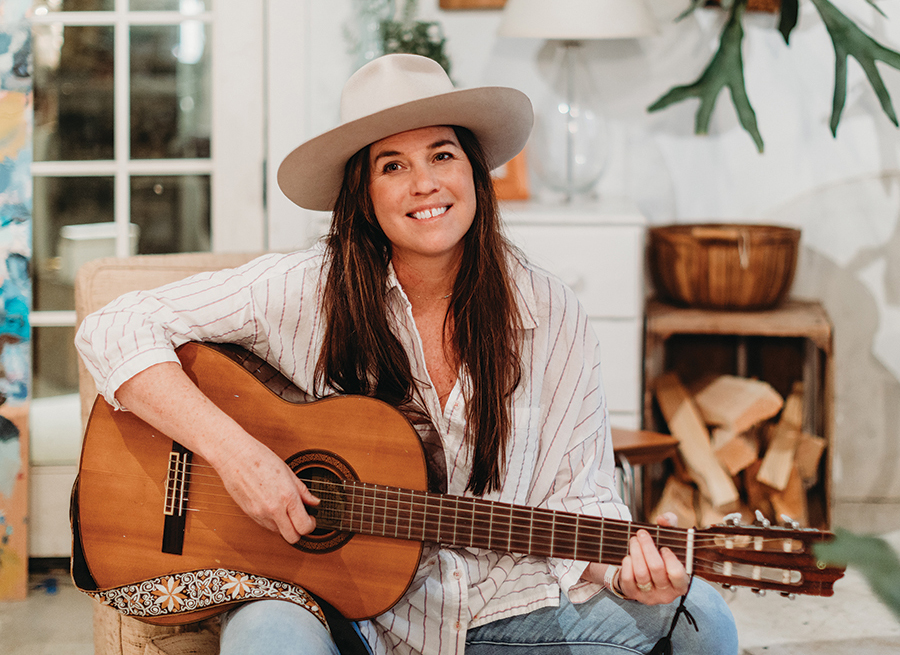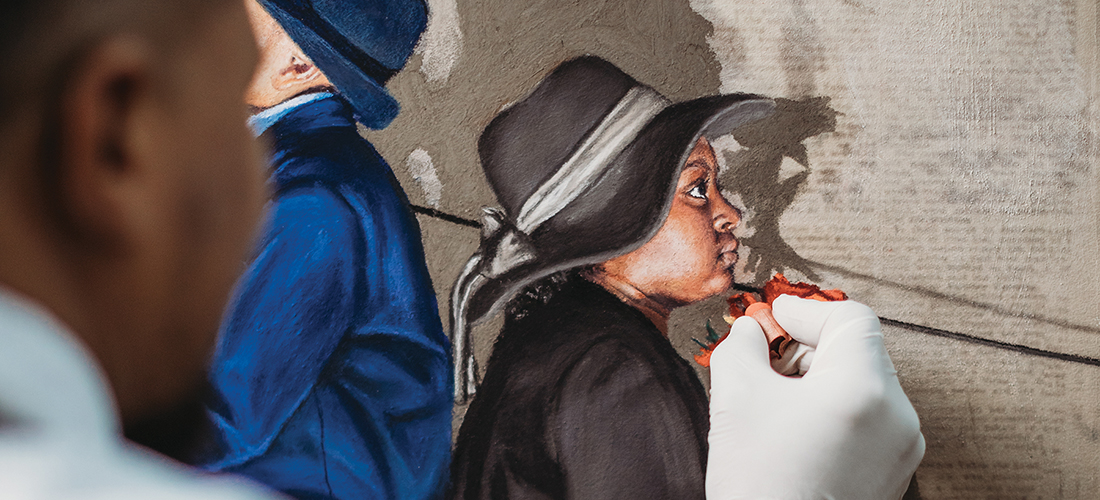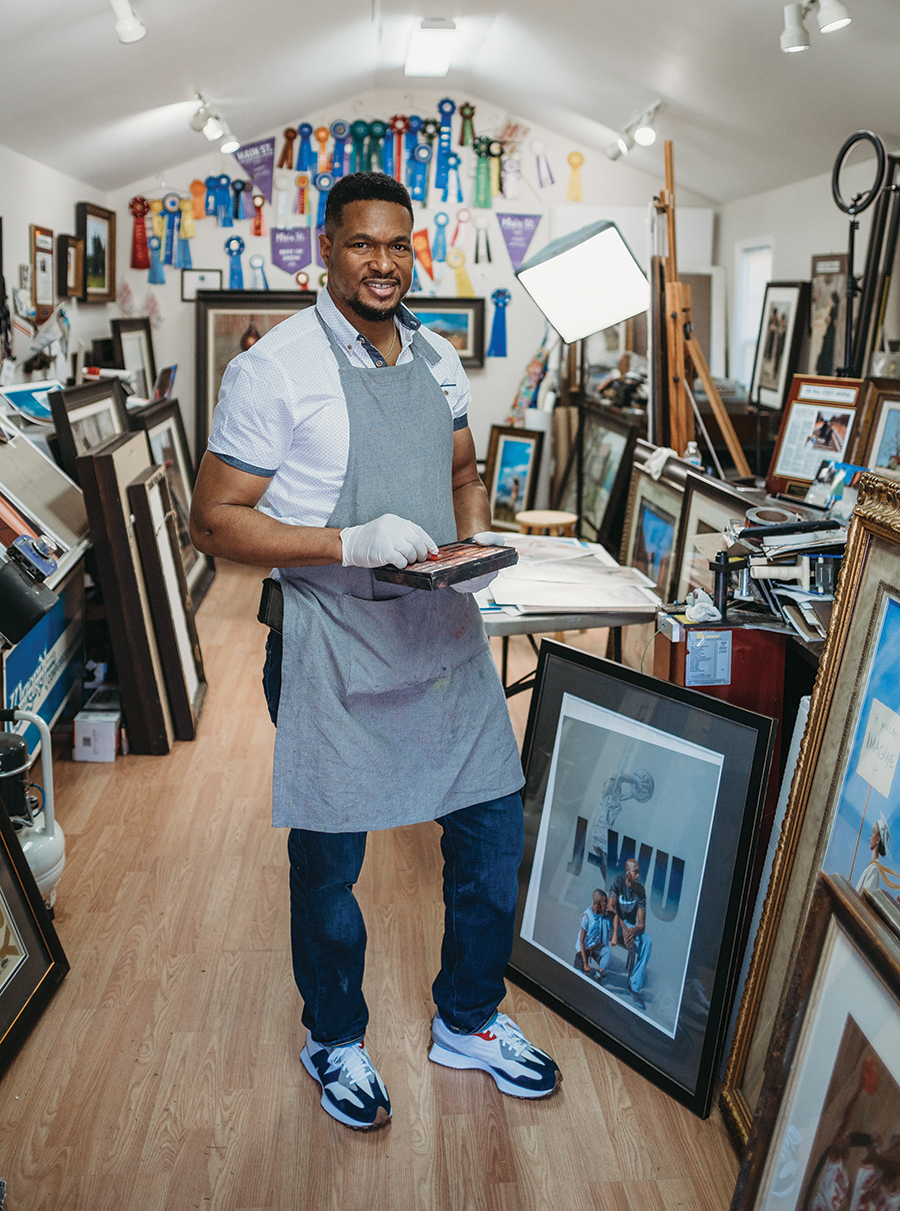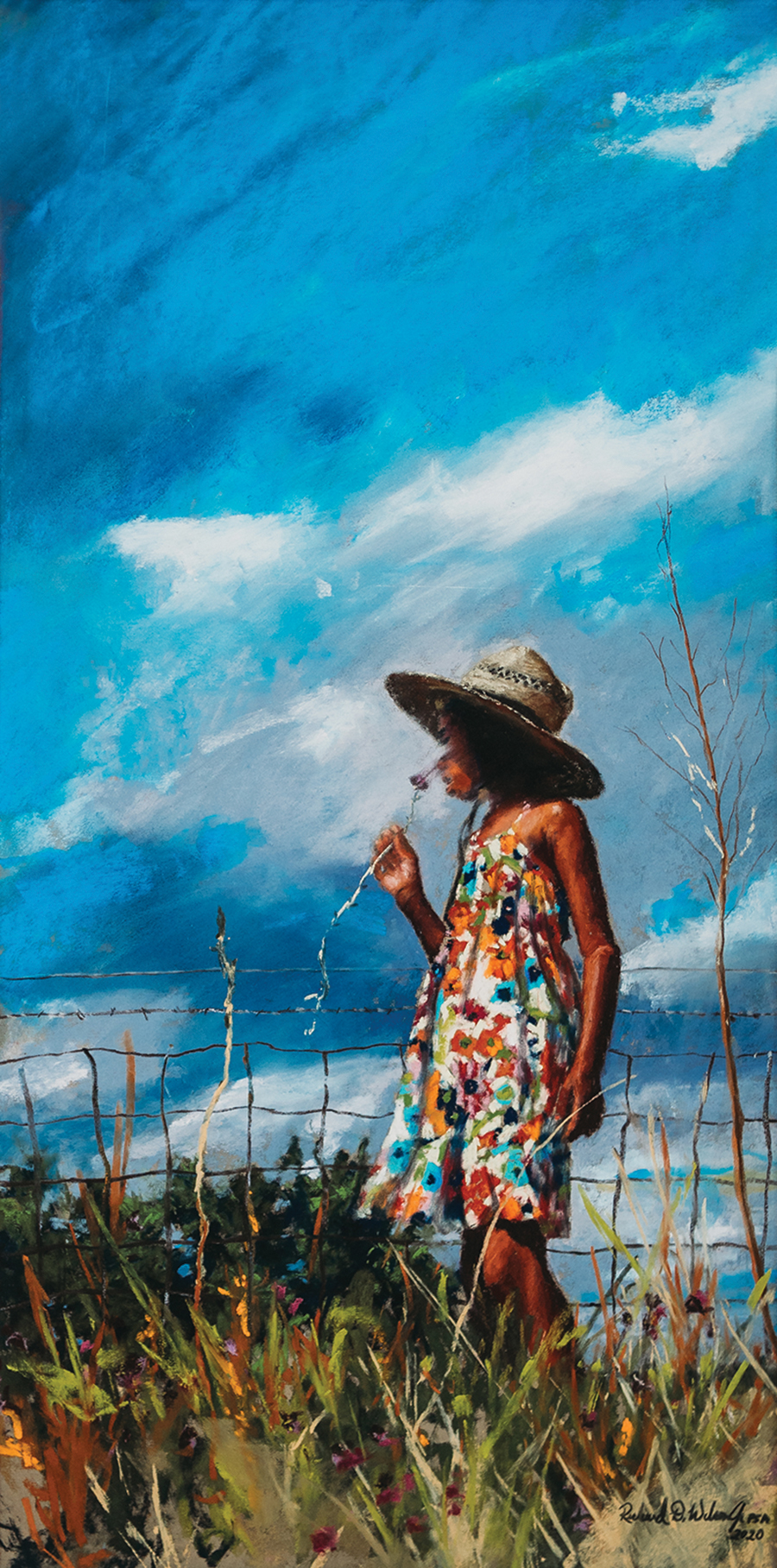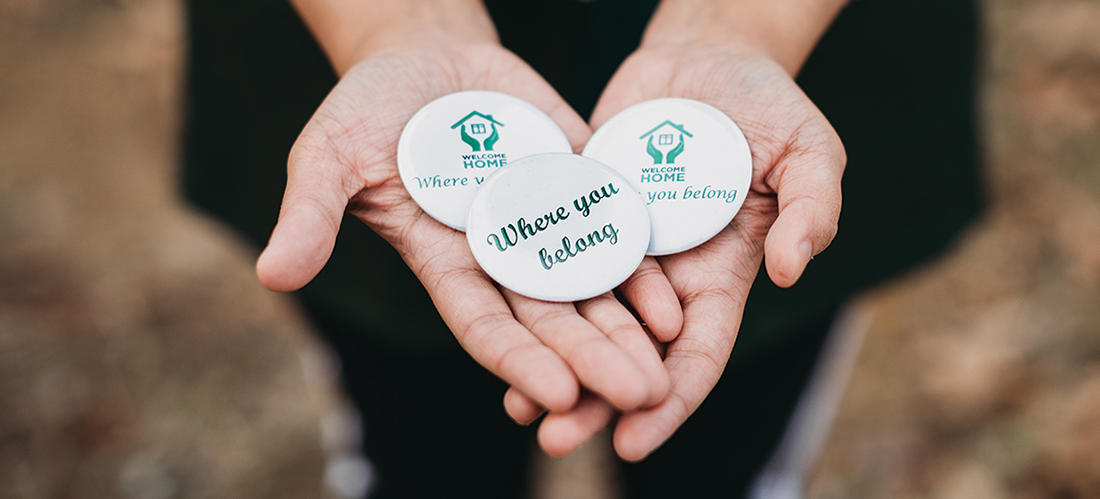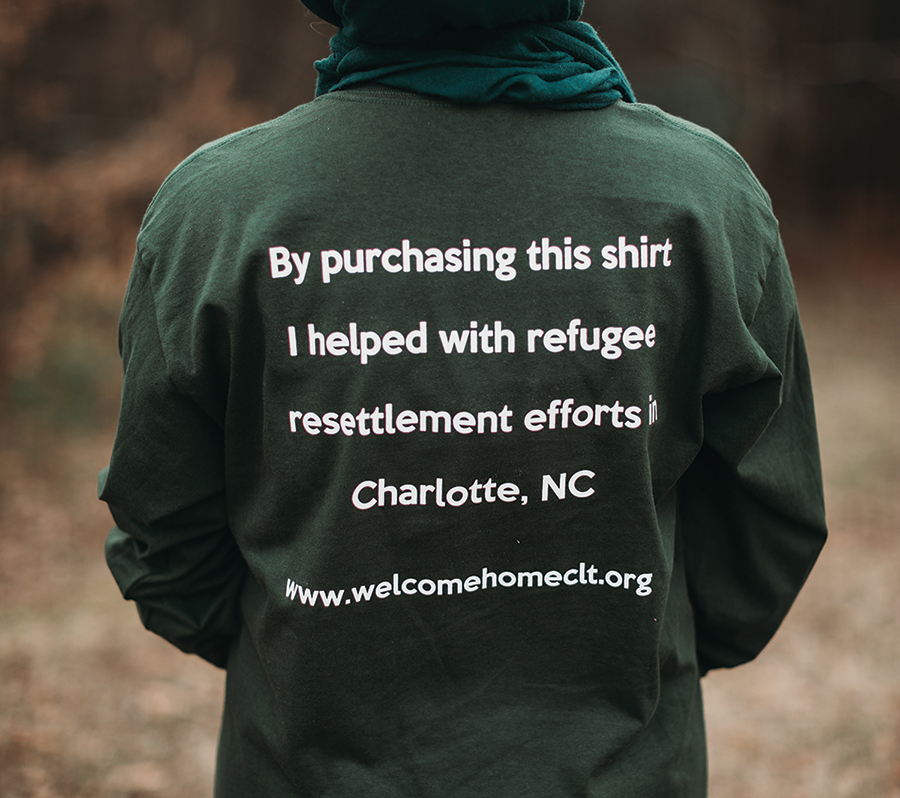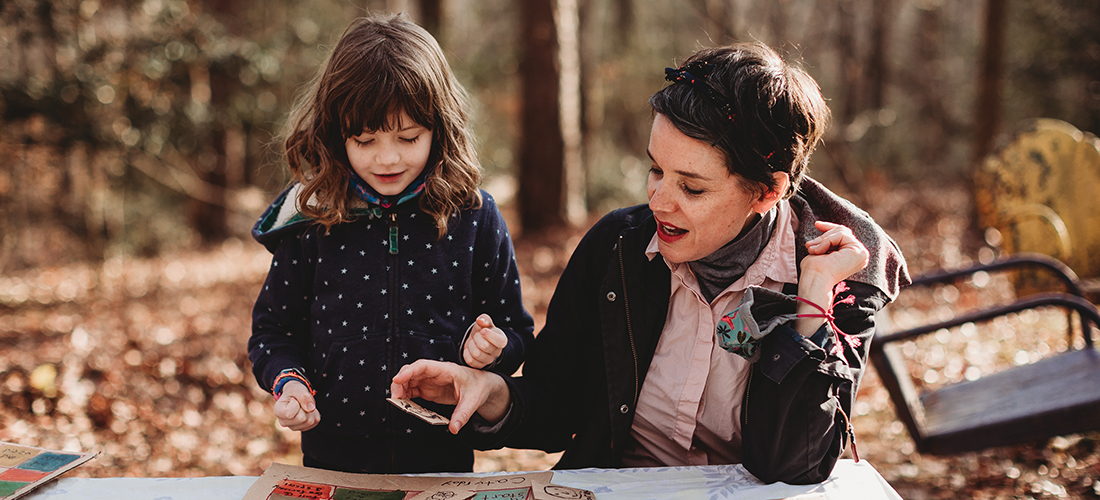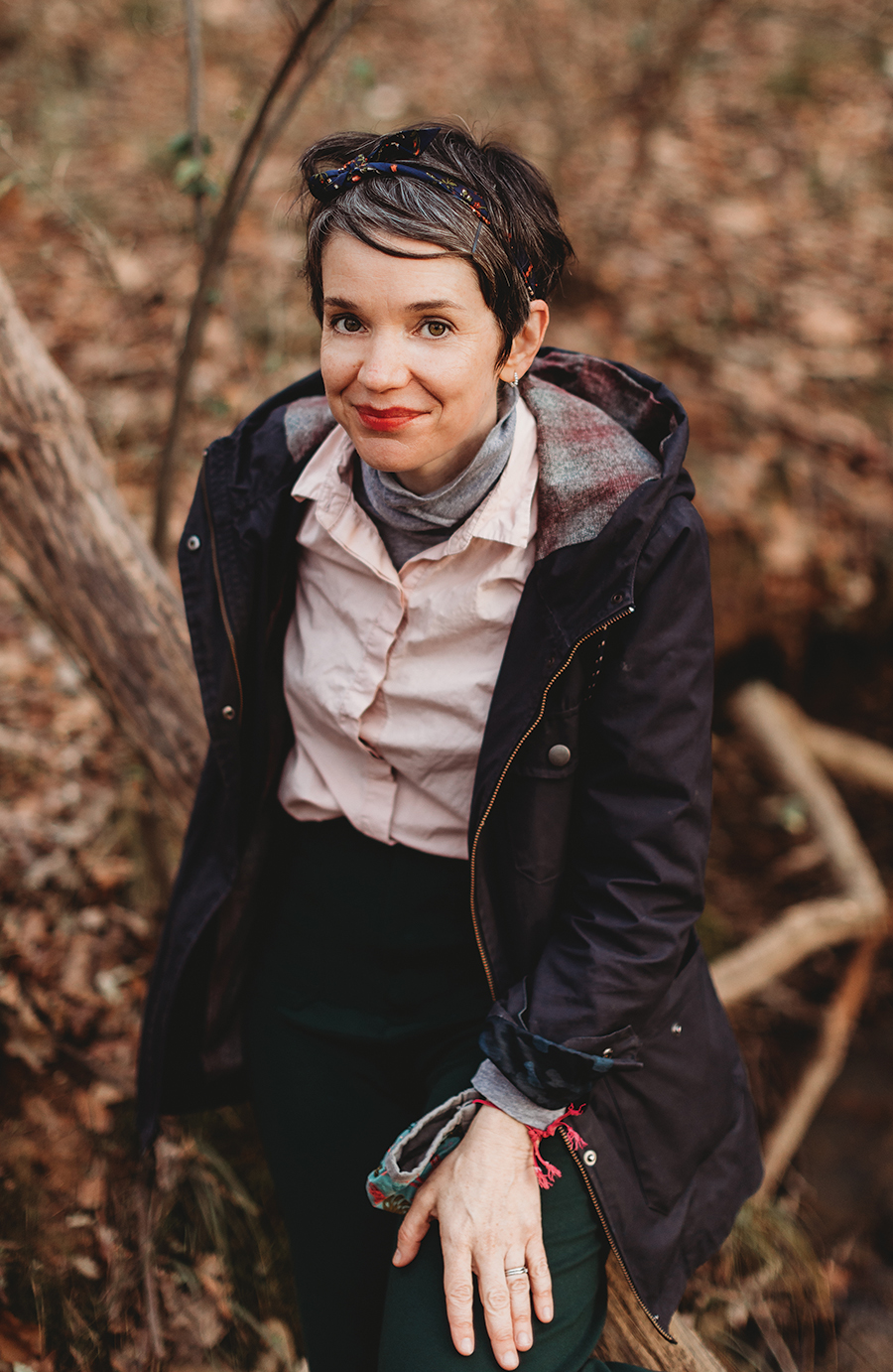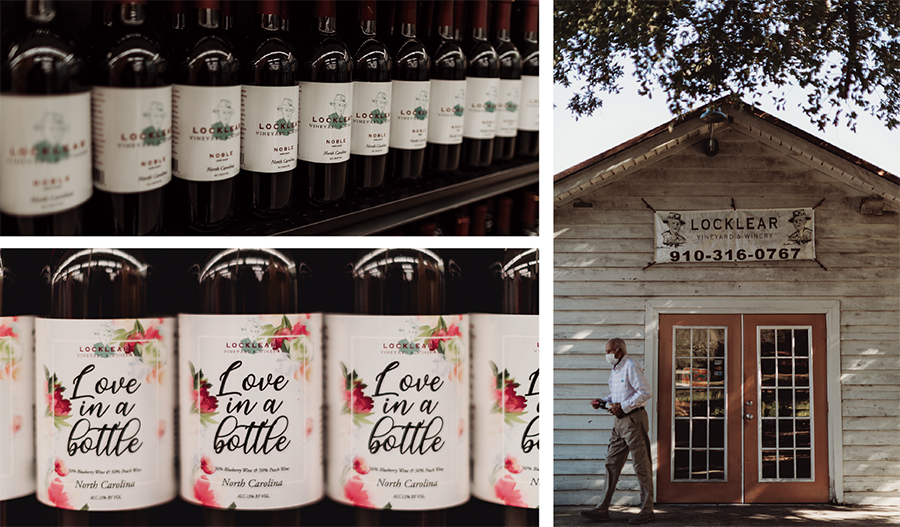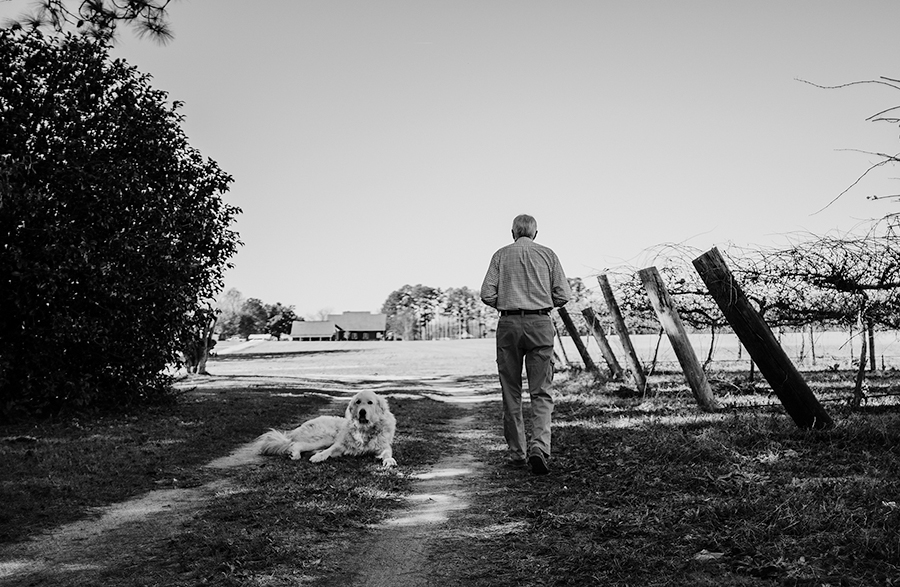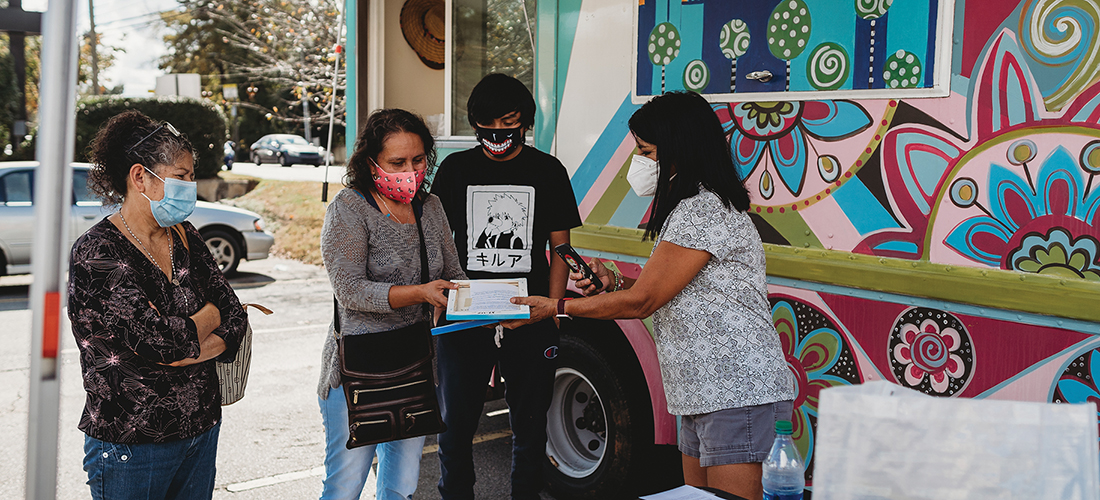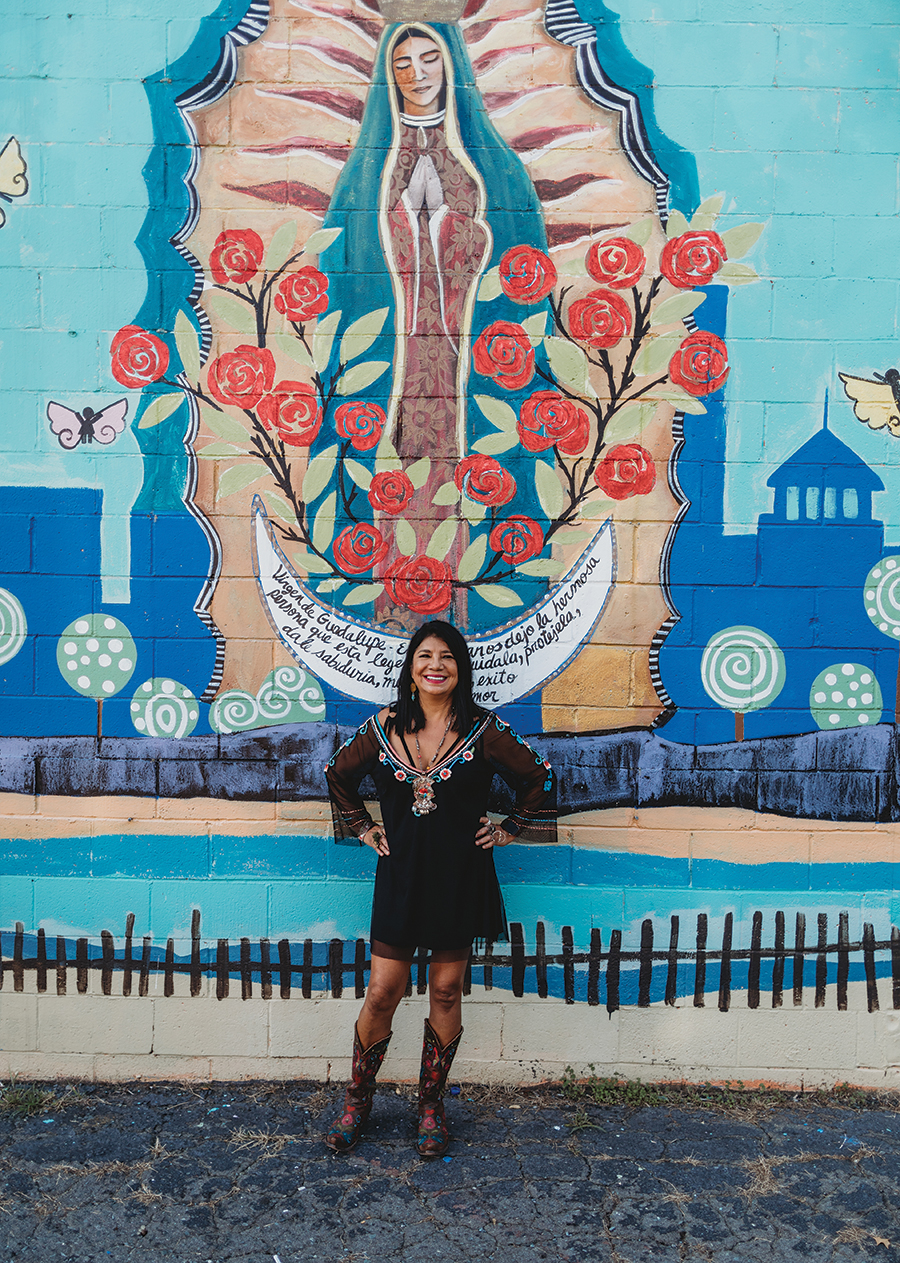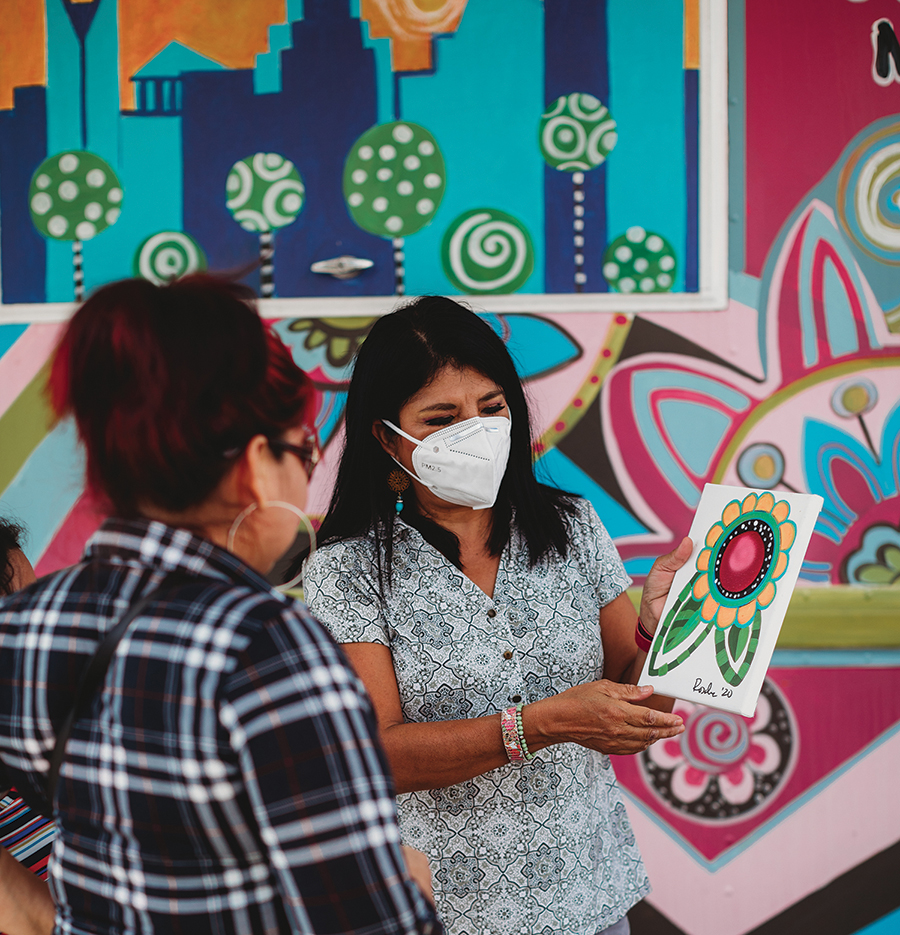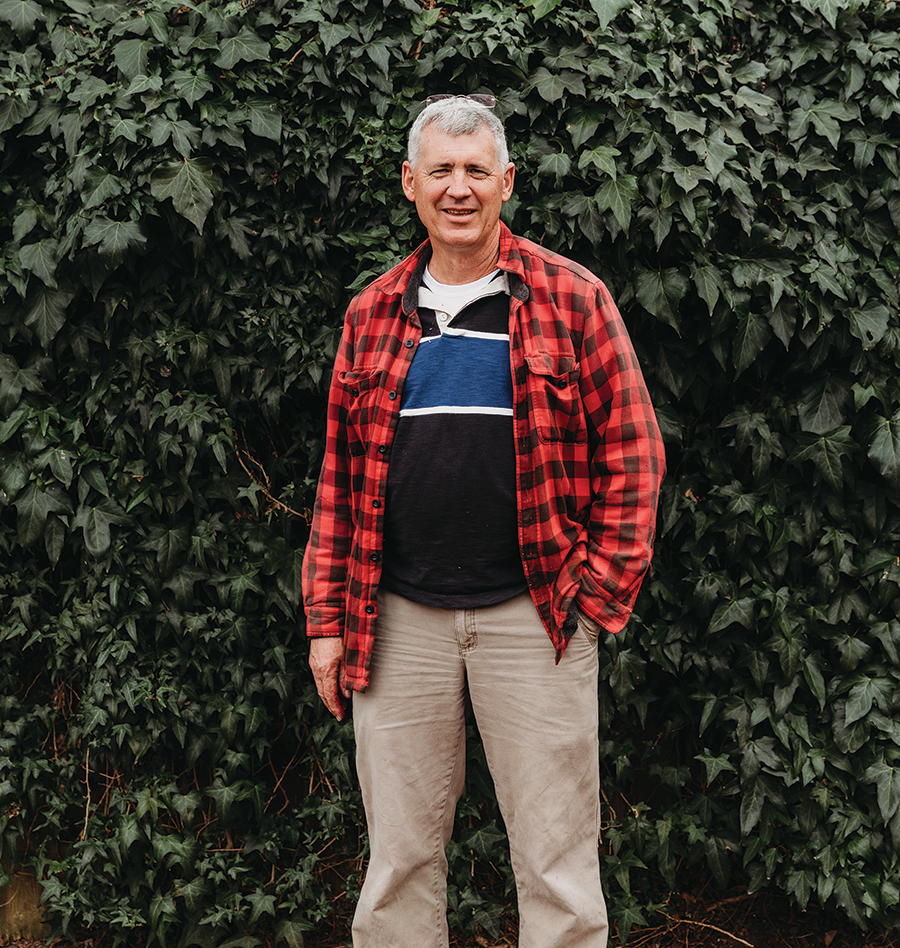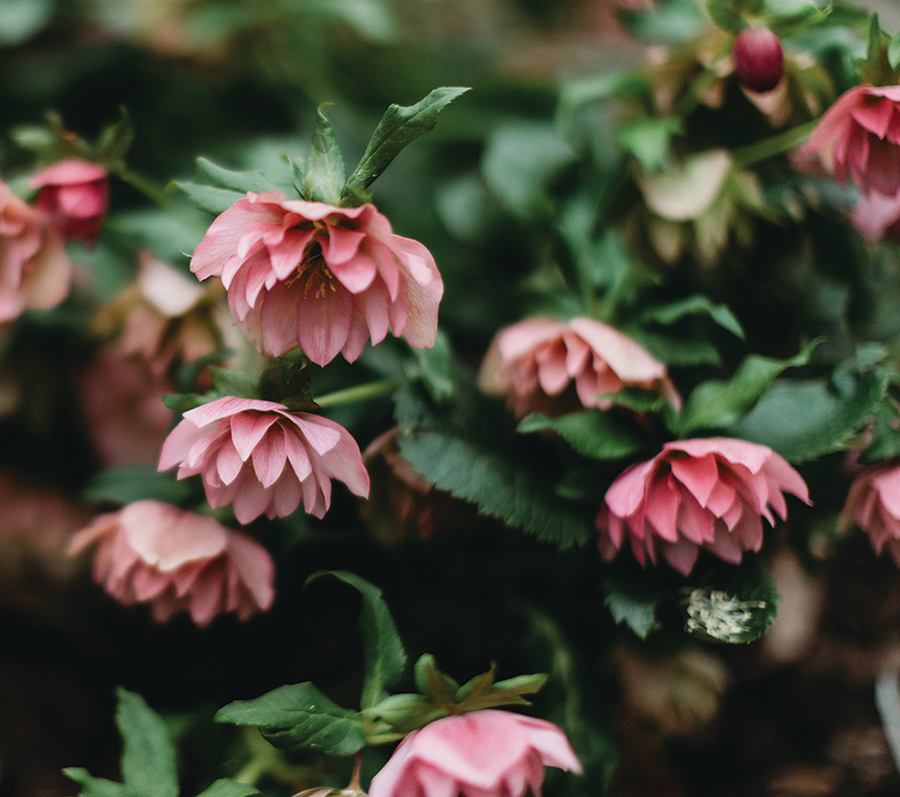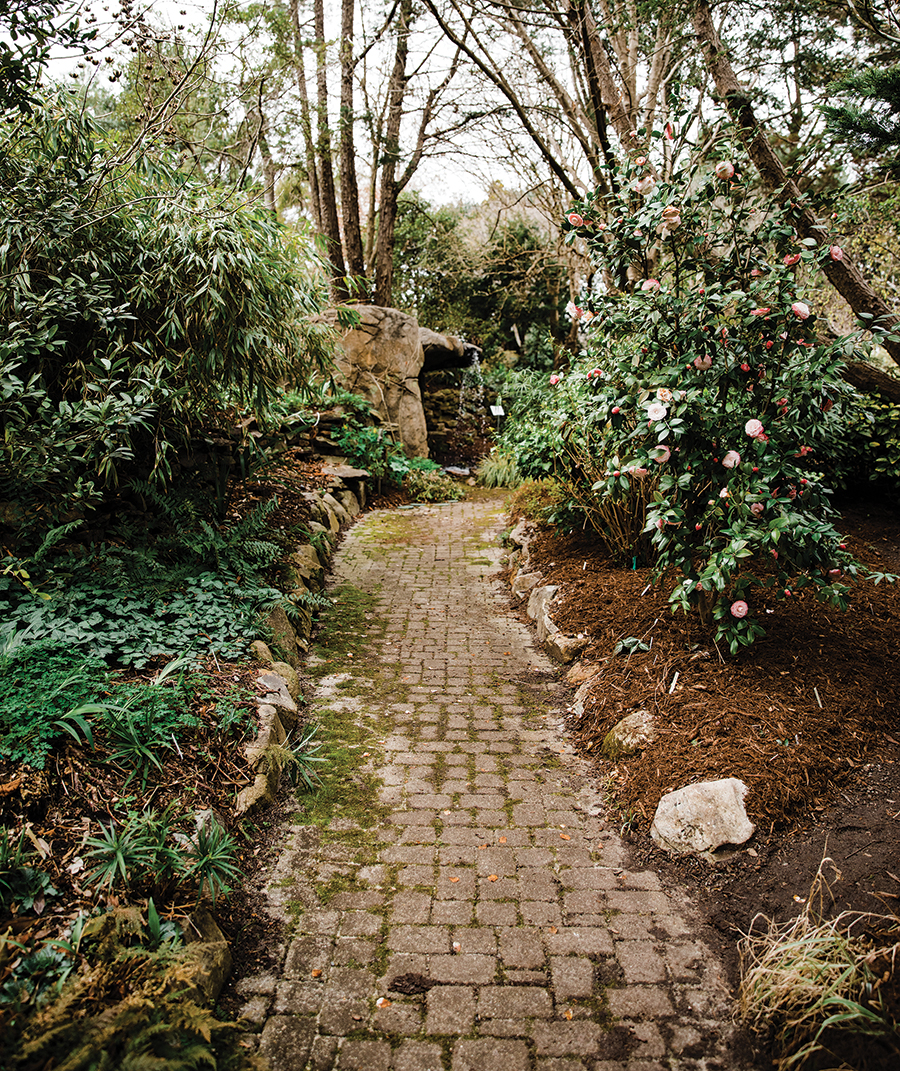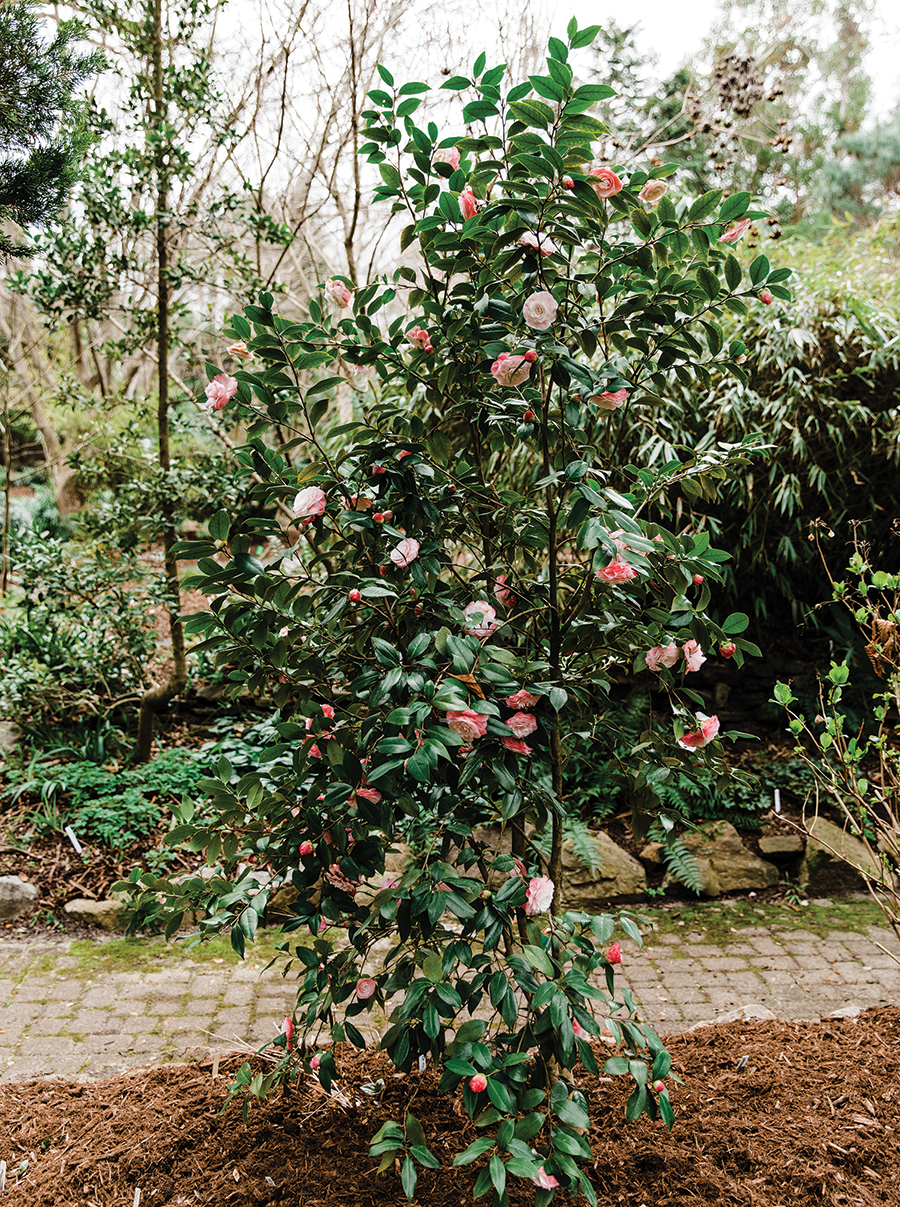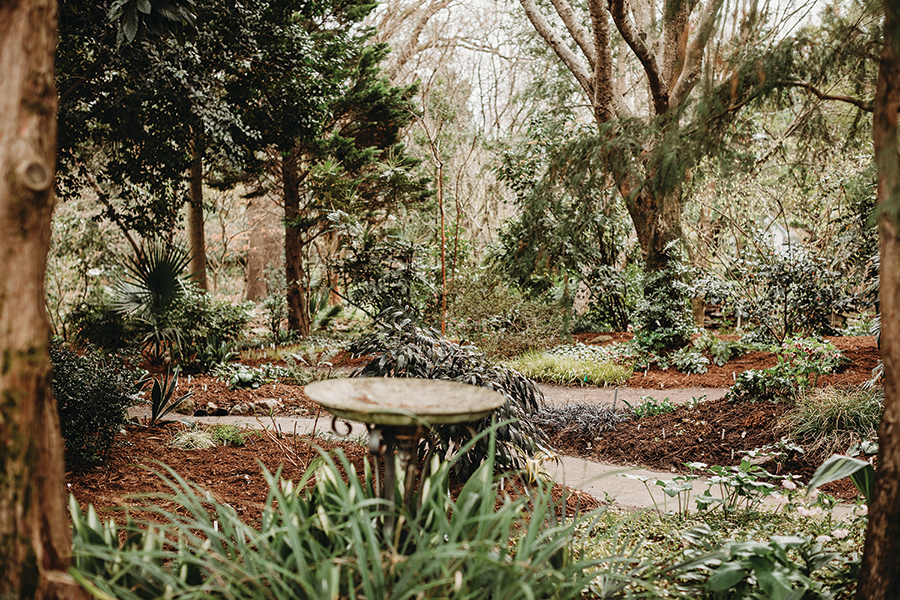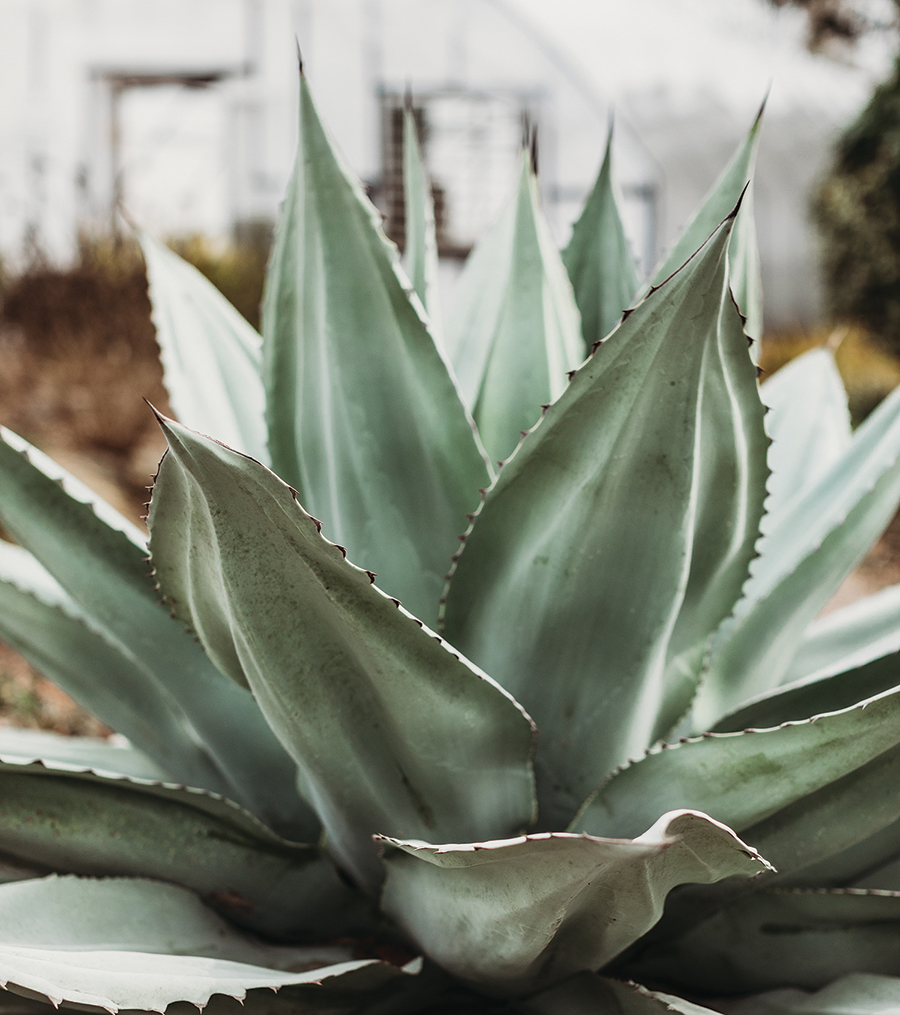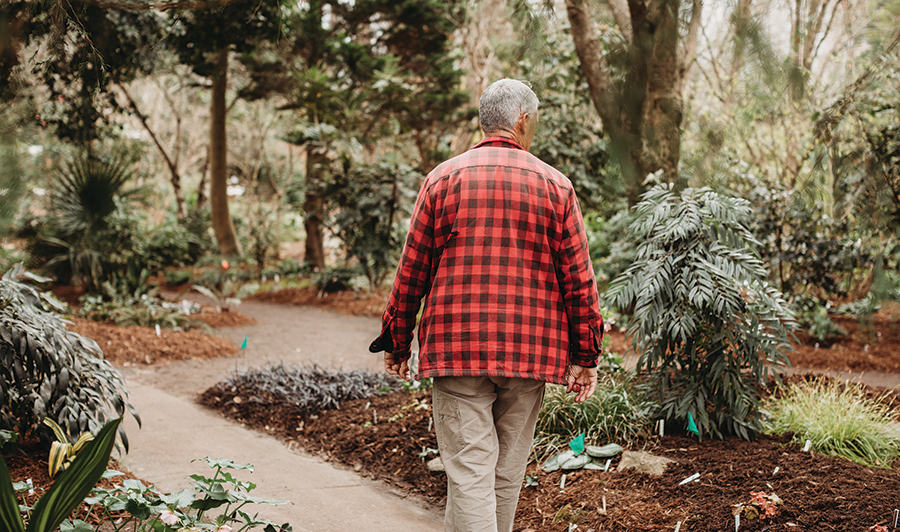Totally Blawesome
A flower farm where miracles bloom year-round
By Wiley Cash • Photographs By Mallory Cash
On a lush four acres of land nestled between Chapel Hill and the Haw River, 24-year-old Raimee Sorensen spends his days growing, harvesting, assembling and delivering stunning bouquets and custom flower arrangements. According to his mother, Rebecca, “He emanates joy.” The oldest of three siblings, Raimee works alongside Rebecca and a small, devoted team of farmers. It’s clear that everyone at Blawesome flower farm is dedicated to two things: delivering high-quality, organically grown flowers to the waiting hands of their customers and ensuring that everyone on the farm has the opportunity to live and work to their full potential, including Raimee, who has a diagnosis of autism and epilepsy.
“When given the opportunity to be amazing and successful,” says Rebecca, “folks with disabilities will rise to meet that challenge. If we are able to provide more opportunities for folks with disabilities to be successful, then I think we would see a moral shift in our communities.”
And farming is certainly challenging. “There are always opportunities to problem solve,” Rebecca says. “It’s very cerebral work.” In the morning, Raimee looks at his check list and gets to work, deciding how much preservative solution to add to which type of flower and what kind of tool is necessary to harvest each variety. “And when he takes his bouquets out into the world, he gets the confirmation of ‘You’re a wonderful farmer, and you grow amazing things,’” Rebecca adds. From season to season, Raimee’s knowledge and confidence have grown, and Rebecca has seen the skills he’s learned on the farm transfer to other areas of his life. For example, when they host tours and workshops on the farm, Raimee is able to share his knowledge about what’s going on in each production zone, and if someone asks a question, it’s Raimee, despite challenges with expressive and receptive language, who often chooses to answer it.
Before starting the farm, the Sorensens homeschooled Raimee for eight years, and during that time, they set up community internships where he could explore a number of opportunities while building varying sets of skills. He particularly excelled at a community farm where he volunteered for four years. He enjoyed being outdoors and working alongside others. Eventually, the Sorensens enrolled Raimee in a charter school specifically geared toward students with disabilities, but when the school abruptly shut down, they realized they needed to find an opportunity for him to achieve his greatest sense of independence. Better yet, they would create one.
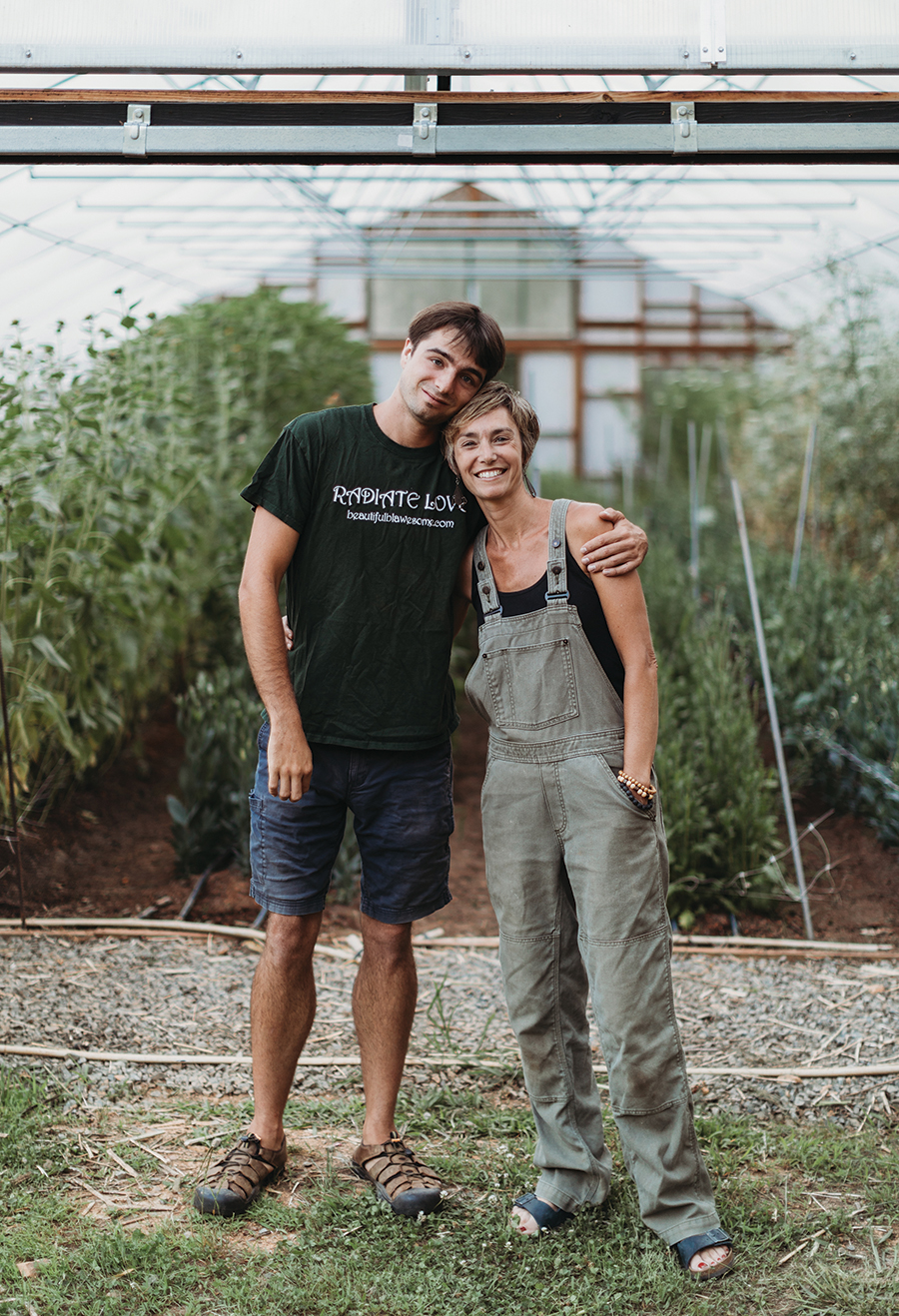
Initially, the Sorensens’ decisions were practical. They had a 1/4-acre strip of land alongside their driveway, and based on how Raimee performed in his work at the community farm, they decided to cultivate the small area into a flower garden. After all, he was good at growing things, and he enjoyed connecting with the community. What better way to connect with others than by putting fresh flowers in their hands?
Raimee was not the only Sorensen with a background in farming and a love for flowers. Rebecca grew up in rural northeastern Pennsylvania with a father who was an avid gardener. In high school, she worked at and eventually managed a greenhouse, and later, on the other side of the country, she worked at an organic farm, growing peppers and houseplants in greenhouses in Oregon. She felt confident that she and Raimee could turn this small plot of land beside their house into a successful venture that would allow them to explore their interests and talents.
And then the four-acre lot next door went up for sale. Rebecca and Raimee’s vision for what they could do grew, and the family shifted again.
After purchasing the land, Rebecca applied for a micro-enterprise grant. The initial grant was for $5,000 but after completing the application, she learned that more money was available. She went back to the drawing board, carefully envisioning a project and wrote a proposal that eventually won a $50,000 state grant from the Division of Vocational Rehabilitation. The shift had happened. The Sorensens were now owners of land that would become a flower farm, and all they had to do was build it.
Working with a team of land specialists and local farmers, the Sorensens grew intimately familiar with their new land, working to create a plan that was realistic in terms of what they could grow and harvest with their small crew. At the same time, Rebecca, whose background is in social work, was traveling the state, leading workshops on affordable housing for adults with mental illnesses. She met an architect from Elon University whose son had a diagnosis, and he suggested that they work on a project together. He went on to design the barn on the Sorensens’ new property, and he brought out teams of university students to help construct it. He would later design the home where Raimee and a supported-living provider live.
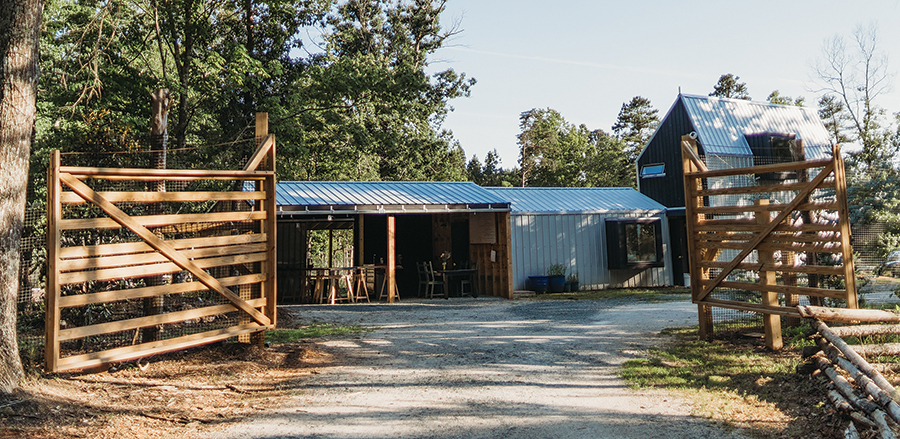
Blawesome was born, and the flower farm that began on a small strip of land beside the family’s driveway grew into a working farm that provides fresh flowers for everything from weddings to businesses, plus events at UNC-Chapel Hill.
But no matter how much the Sorensens had been willing and able to shift over the years, COVID presented an incredible challenge. They lost national contracts with huge corporations. Weddings were cancelled, and the university moved nearly all of its business online. But people still wanted flowers, and Blawesome met that need. Individual orders soared, as did memberships in their CSA (Community Supported Agriculture), which provides seasonal flowers year-round to subscribers. “The community just came out and lifted us up in a way we could’ve never anticipated,” Rebecca says. “It was extraordinary.”
That says a lot coming from someone who has seen extraordinary things happen, both in her family and in her community. Raimee took medication for obsessive compulsive disorder for eight years, and then he was able to stop taking it one year after starting the farm. He has epilepsy, but according to Rebecca, he’s had only one seizure in the same time span. “You can pull Raimee’s Medicaid file for the past four years and see that he has not accessed any of the services he used to access since we started the farm, because he’s happier and healthier than he’s ever been,” she says. Both Raimee and the farm are thriving. “A lot of people in his situation don’t get told how special they are,” she adds.
But it is hard work, and the work never stops. “I don’t know if people understand how completely consuming farming is. It’s a lifestyle,” Rebecca says. “I like that for Raimee because it’s every part of his day. There’s not any time when he’s not thinking about it or planning for it or anticipating something, but it’s pretty miraculous to be part of something that is a living, breathing organism. I feel like I’m surrounded by miracles all the time.” PS
Wiley Cash is the writer-in-residence at the University of North Carolina-Asheville. His new novel, When Ghosts Come Home, will be released this year.
His all-time favorite book? Song of Solomon by Toni Morrison.
